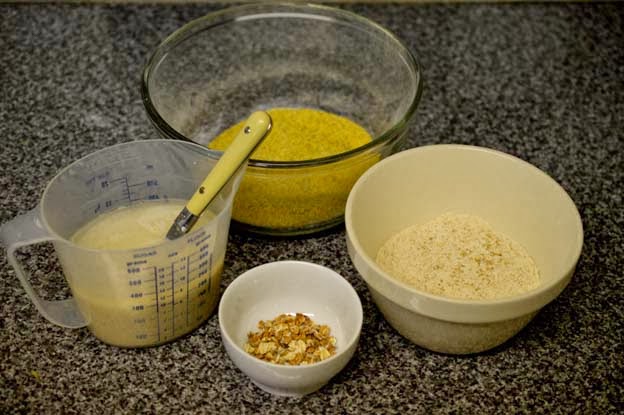On Friday 7th March 2014 at 7pm, I am to give a talk to the Stoke On Trent Museum Archaeological Society (SOTMAS) about the history of bread. This will involve discussing selected examples of breads from Historical times. One bread I have opted to talk about is Peasebread, a good old Medieval and Tudor backup for when the wheat flour is scarce before the Summer harvest. I have not made an authentic version of this bread before, and since the talk includes a tasting, I need to have a go at the real recipe.
Peasebread is simple to make - it requires pea flour, wholewheat flour (or bran), a few loose grains of whatever is at hand (sweepings of the bakery floor) and warm water with brewers yeast.
The ingredients are mixed into a stiff dough and kneeded together. Since this is a low gluten bread, it will not rise much, so there is no need for a second rising. It just stands for half an hour before going into the oven for 20 minutes.
The dough would have been made into large rolls and pressed with the bakers thumb to leave an impression that signal the bread was not made from wheat flour alone. This was a cheap bread for poor customers.
The bake gives a very firm and small loaf with a tight texture. It is pleasant to eat when it is fresh, a little chewy and very nutty in flavour. This bread needs eating on the day or it will be too hard to eat as it goes stale very quickly.
The Medieval solution to stale peasebread was to make pobs. Break up the stale loaf and soak in hot milk for 10 minutes, until it is soft. This may well have been the only serious meal of the day for a peasant or a parish pensioner.
Pea flour is difficult to obtain. For this exercise I had to grind my own dried peas, as would the miller when the wheat grains ran out. Of course, a good miller would always keep a sack or two of good wheat flour for his wealthy customers.






No comments:
Post a Comment